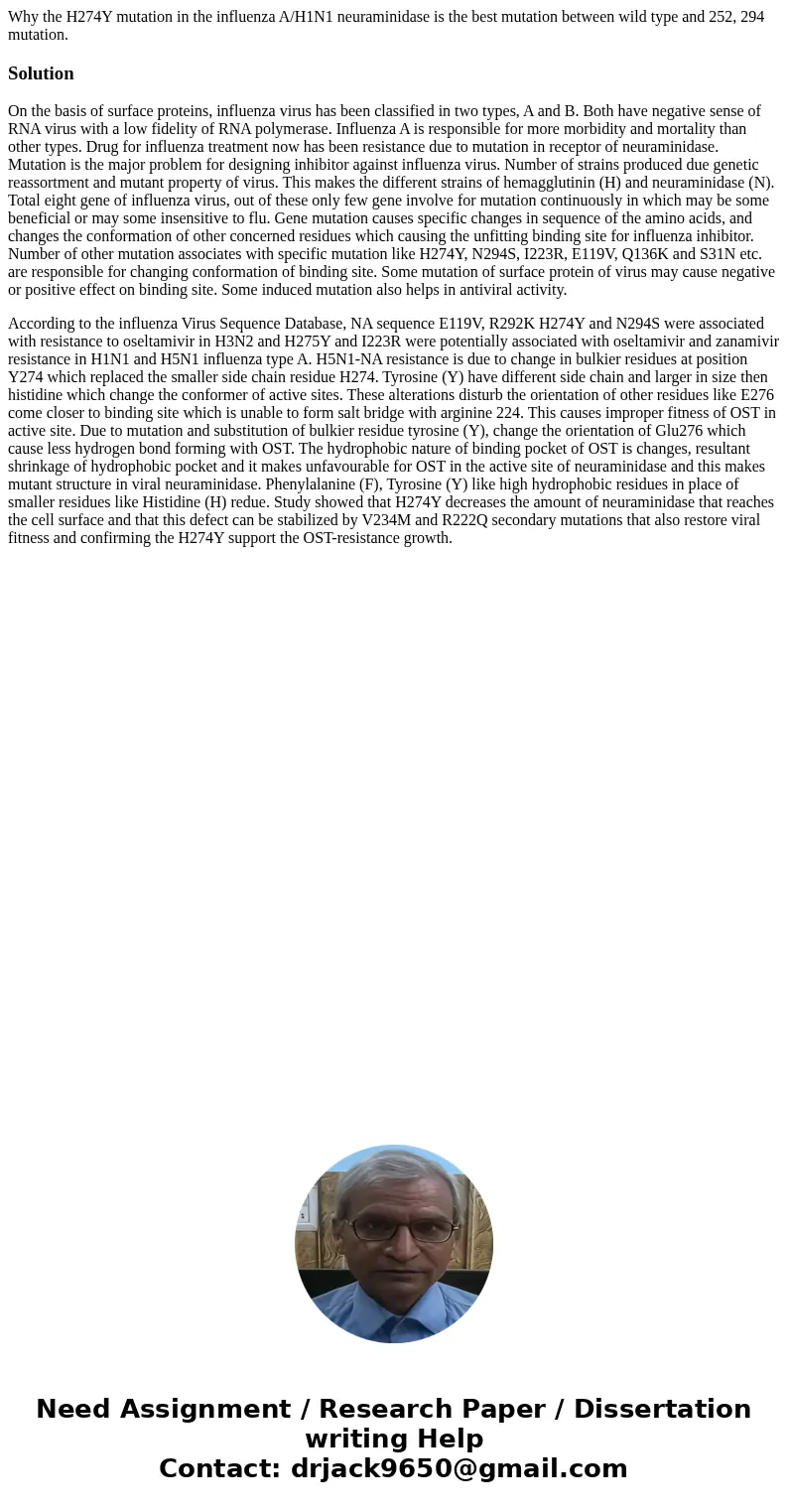Why the H274Y mutation in the influenza AH1N1 neuraminidase
Why the H274Y mutation in the influenza A/H1N1 neuraminidase is the best mutation between wild type and 252, 294 mutation.
Solution
On the basis of surface proteins, influenza virus has been classified in two types, A and B. Both have negative sense of RNA virus with a low fidelity of RNA polymerase. Influenza A is responsible for more morbidity and mortality than other types. Drug for influenza treatment now has been resistance due to mutation in receptor of neuraminidase. Mutation is the major problem for designing inhibitor against influenza virus. Number of strains produced due genetic reassortment and mutant property of virus. This makes the different strains of hemagglutinin (H) and neuraminidase (N). Total eight gene of influenza virus, out of these only few gene involve for mutation continuously in which may be some beneficial or may some insensitive to flu. Gene mutation causes specific changes in sequence of the amino acids, and changes the conformation of other concerned residues which causing the unfitting binding site for influenza inhibitor. Number of other mutation associates with specific mutation like H274Y, N294S, I223R, E119V, Q136K and S31N etc. are responsible for changing conformation of binding site. Some mutation of surface protein of virus may cause negative or positive effect on binding site. Some induced mutation also helps in antiviral activity.
According to the influenza Virus Sequence Database, NA sequence E119V, R292K H274Y and N294S were associated with resistance to oseltamivir in H3N2 and H275Y and I223R were potentially associated with oseltamivir and zanamivir resistance in H1N1 and H5N1 influenza type A. H5N1-NA resistance is due to change in bulkier residues at position Y274 which replaced the smaller side chain residue H274. Tyrosine (Y) have different side chain and larger in size then histidine which change the conformer of active sites. These alterations disturb the orientation of other residues like E276 come closer to binding site which is unable to form salt bridge with arginine 224. This causes improper fitness of OST in active site. Due to mutation and substitution of bulkier residue tyrosine (Y), change the orientation of Glu276 which cause less hydrogen bond forming with OST. The hydrophobic nature of binding pocket of OST is changes, resultant shrinkage of hydrophobic pocket and it makes unfavourable for OST in the active site of neuraminidase and this makes mutant structure in viral neuraminidase. Phenylalanine (F), Tyrosine (Y) like high hydrophobic residues in place of smaller residues like Histidine (H) redue. Study showed that H274Y decreases the amount of neuraminidase that reaches the cell surface and that this defect can be stabilized by V234M and R222Q secondary mutations that also restore viral fitness and confirming the H274Y support the OST-resistance growth.

 Homework Sourse
Homework Sourse